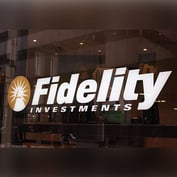For the first time, more of advisors’ total revenues are coming from fees than commissions.
A new white paper by CLS Investments examines how more advisors are embracing fee-based business models and transitioning away from a commission-based transactional approach.
According to the paper, titled Making the Switch: The Benefits of Moving to a Fee-based Model, advisors now derive 46% of their total revenues from fees, versus 45% in commissions.
The paper says that in the coming years advisors are expected to derive more than 55% of their revenues from fees.
“It’s definitely a growing trend, and one that we continue to see increase,” said Todd Clarke, CEO of CLS Investments, an ETF-based asset manager that is a unit of NorthStar Financial Services, in an interview with ThinkAdvisor. “If you looked back 5 years ago, 10 years ago, 20 years ago, fees represented a significantly lower percentage.”
This movement toward fees and away from commissions has been a long-term trend in wealth management.
The paper points to data from Cerulli Associates that shows the amount of assets in fee-based accounts nearly tripled over the last decade – from $987 billion in 2003 to $2.7 trillion in 2013.
More recently, though, the introduction of robo-advisors and a new fiduciary rule have created a sense of urgency for today’s advisors to transition their practice to a fee-based model.
“Regulators, such as the Department of Labor, who oversee retirement assets, are pushing an agenda that may seriously impact the viability of traditional commissions in retirement plans, including IRA accounts,” the paper states. “When taken to the extreme, regulators may make commissions obsolete, similar to what has happened in the UK and Australia, where commissions have been outright banned.”
The DOL sent late Thursday its rule to redefine fiduciary on retirement advice to the Office of Management and Budget for its mandatory review.
There’s a clear advantage to clients working with advisors under a fee-based arrangement versus a commission-based one, Clarke said.
“Under a transaction-oriented approach, the broker gets paid when the money moves,” he said. “When the broker recommends a buy or the broker recommends a sell is when the broker gets paid, and while that may be in the best interest of the client, the client does have to wonder why.” With a fee-based approach, the advisor doesn’t get paid to “move the money,” Clarke said.








 January 29, 2016 at 09:45 AM
January 29, 2016 at 09:45 AM










